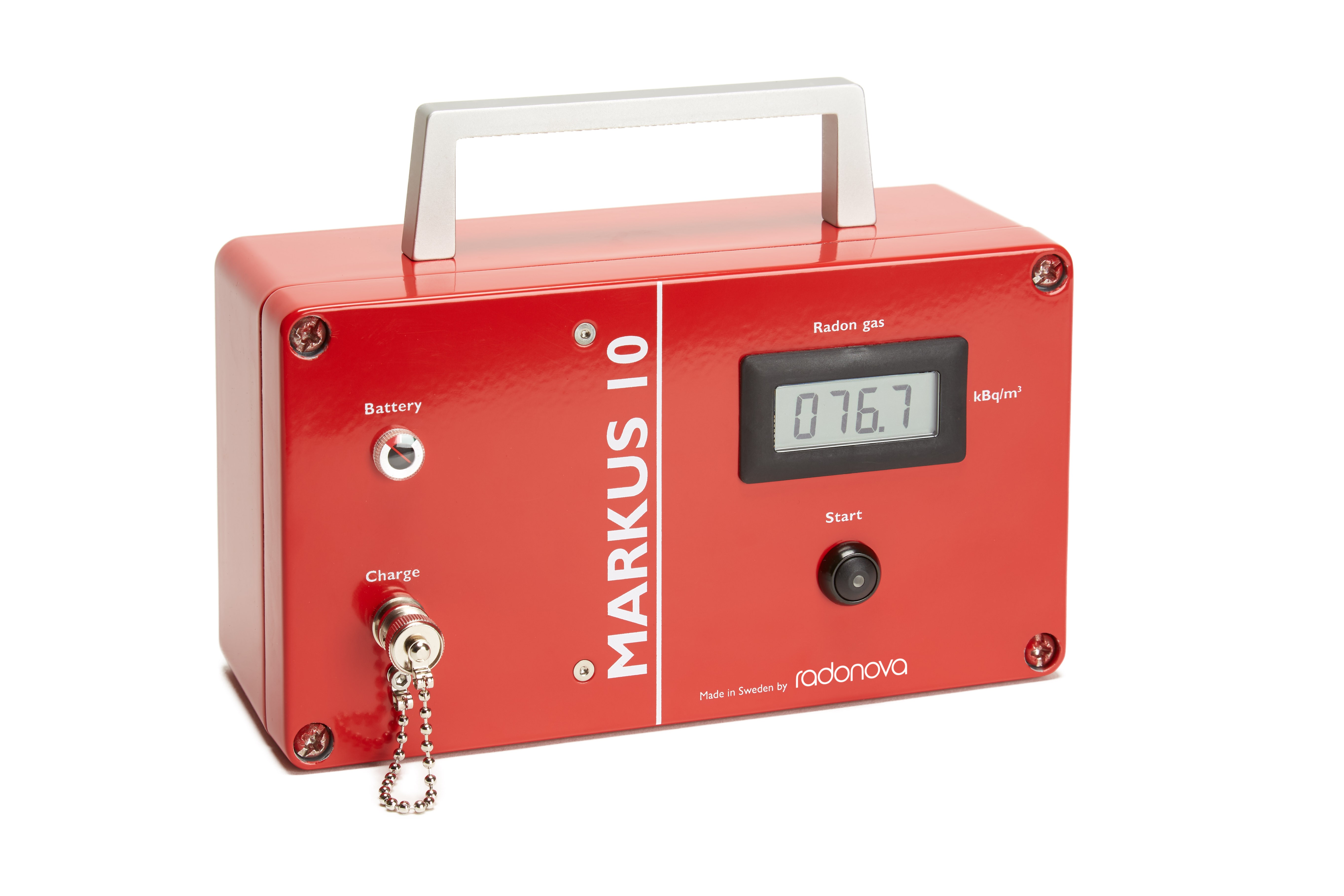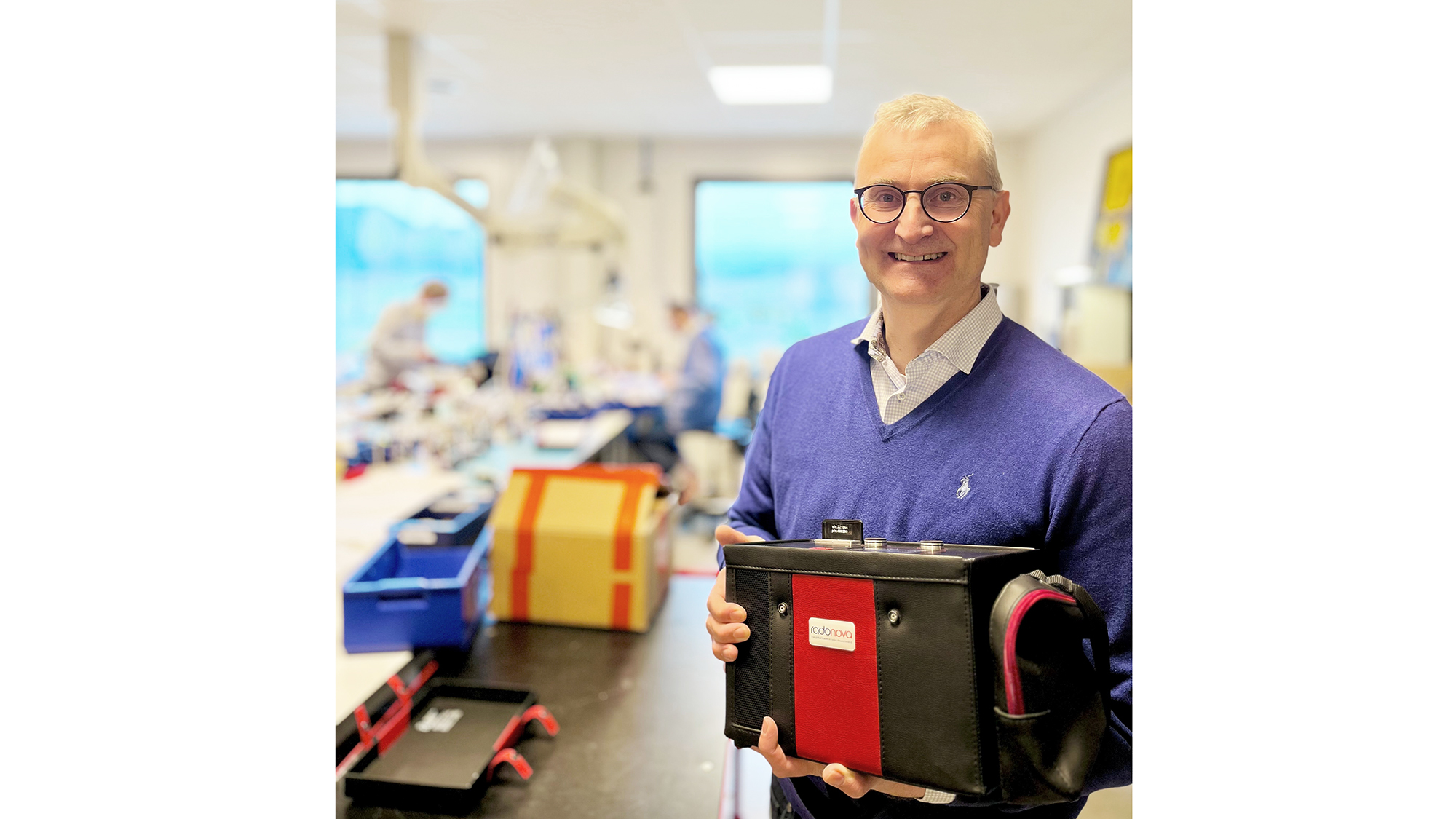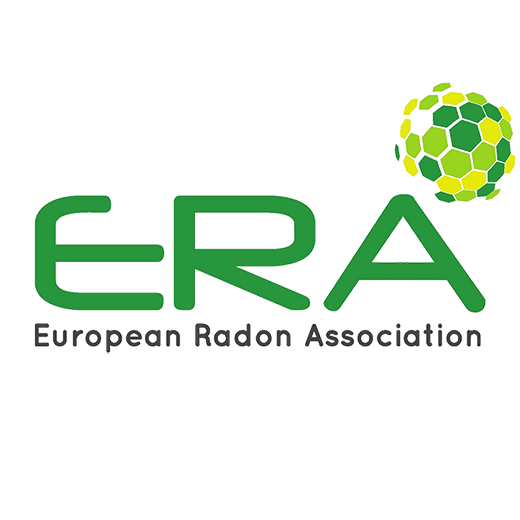As part of a wider strategic growth initiative, Radonova acquired the radon measurement instrument division of Gammadata Instruments earlier this year. The acquisition broadened Radonova’s portfolio of radon measurement technologies by adding several advanced instruments and products to its offering.
Here we take a more in-depth look at MARKUS 10, one of the state-of-the-art radon monitors developed and manufactured by Gammadata, a portable, battery-powered precision instrument for determining radon content in soil – designed with simplicity at its core.
MARKUS 10 Overview
Attach the MARKUS 10 and hollow measurement probe to the ground and simply press a button to start measuring. The soil air is pumped through the probe into a measurement chamber which detects radon daughters (charged isotopes produced from the decay of radon gas which are attached to particles and aerosols). A water lock prevents the chamber from being flooded. The result is presented in the display after 12 minutes.
MARKUS 10 in Action
During the initial measuring phase, air from the soil is pumped up through a sounding tube into a measuring cell. The pumping time (about 30 seconds) ensures that soil gas overfills the chamber.
A pressure sensor stops the pump if the pressure in the tube drops below a given value. When the pressure rises, the pump starts again. The pump’s running time is always the same, which guarantees a certain minimum volume of air that can be measured.
Following the pumping phase, the measurement phase commences. The detector is activated and the voltage to the measuring chamber is switched on. The charged radon daughters are driven towards the detector by an electric field in the chamber. The detector registers the alpha radiation originating from the radon daughters.
The detector pulses are amplified and filtered in a single channel analyser that only accepts pulses from the short-lived radon daughter polonium 218. This eliminates the slow variations in the background from polonium 214. The pulses are counted and the result is shown in text on the instrument’s display (kBq/m3 radon-gas activity).
The display flashes during the measuring phase and becomes steady when the measurement is completed. As the instrument only counts pulses from the short-lived nuclide polonium 218, a new measurement can be started after just 18 minutes. In that time, activity from the previous measurement will have decayed sufficiently.
MARKUS 10 accessories include an aluminium case, charger, water seal, handle, impact rod, spanner to sounding tube and replaceable tip.
Technical Specifications:
Pump capacity: 1.8 lit/min
Effective pumping time: 30 sec
Lower pressure limit: 0.95 Atm
Type of detector: Passivated Implanted Planar Silicon (PIPS™) Detectors
Active area of detector: 100 mm²
Window thickness: 200 µm
Energy resolution of detector: < 16 keV (in vacuum)
Battery capacity: About 70 measurements
Battery type: Lead
Recharging time: 8 hours
Accuracy of measurement: 10 % at 50 kBq/m³ (1350 pCi/l)
Measurement time: Typically 12 minutes
Measurement range: 1– 199kBq/m³
Dimensions: 220 x 122 x 80 mm (L x H x D)
Weight 3 kg
More information about MARKUS is available here»
More information on radon and radon measurement can be found here»







